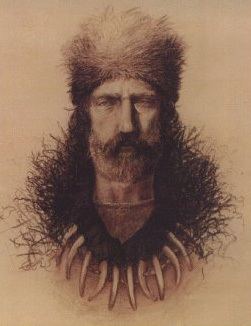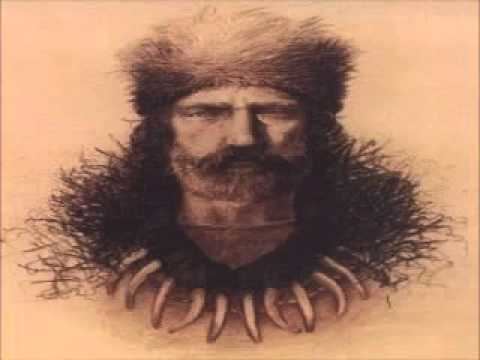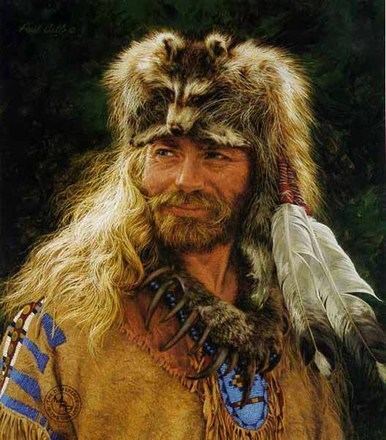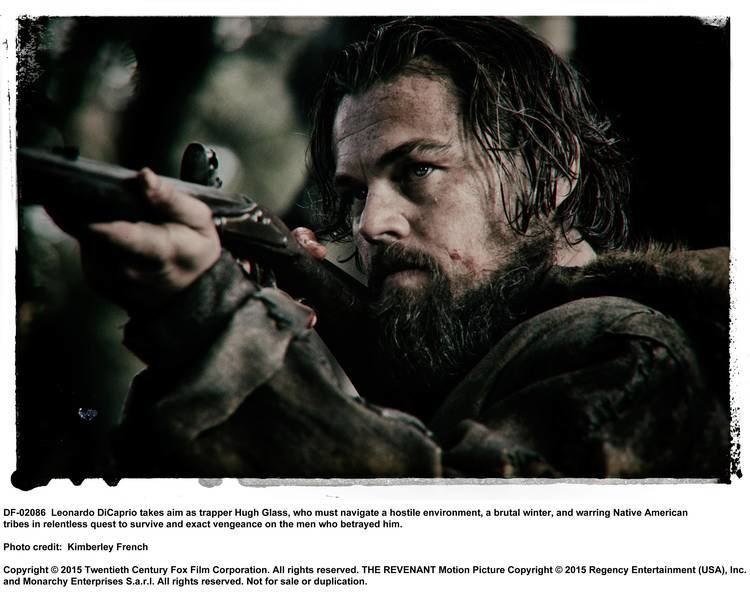Nationality American Name Hugh Glass | Occupation Frontiersman | |
Died 1833, Missouri, United States Similar People Jim Bridger, Alejandro Gonzalez Inarritu, Leonardo DiCaprio, Will Poulter, Tom Hardy | ||
The life and death of hugh glass
Hugh Glass (c. 1780 – 1833) was an American frontiersman, fur trapper, and explorer. Born in Pennsylvania to Scots-Irish parents, Glass became an explorer of the watershed of the Upper Missouri River in present-day Montana, North Dakota, South Dakota and the Platte River area of Nebraska. Glass is most widely known for his story of survival and retribution after being left for dead by companions following his mauling by a grizzly bear, a story which has been retold repeatedly since its day, and which has been adapted for the feature length films Man in the Wilderness (1971) and The Revenant (2015). The retellings portray Glass, who in the best historical accounts made his way crawling and stumbling 200 miles (320 km) to Fort Kiowa in South Dakota, after being abandoned without supplies or weapons by fellow explorers and traders during General Ashley's expedition of 1823.
Contents
- The life and death of hugh glass
- The folklorist the legend of hugh glass
- Early life
- General Ashleys expedition
- Bear mauling and revenant
- Pursuit of Fitzgerald and Bridger
- Further explorations for Ashley
- Later years
- In popular culture
- References

The folklorist the legend of hugh glass
Early life

Hugh Glass was born c. 1780 in Pennsylvania to Scots-Irish parents who had immigrated from Ulster in present day Northern Ireland. His life before the bear attack is uncertain. His life story is noted for its frequent embellishment. He was reported to have been captured by privateers under the command of Jean Lafitte off the coast of Texas in 1816 and forced to become a pirate for up to two years. He allegedly escaped by swimming to shore near what is today Galveston, Texas. Glass is later rumored to have been captured by Pawnee Native Americans with whom he lived for several years. He eventually wed a Pawnee woman. He traveled to St. Louis in 1821, accompanying several Pawnee delegates invited to meet with United States authorities.
General Ashley's expedition
In 1822, Glass responded to an advertisement in the Missouri Gazette and Public Advertiser placed by General William Henry Ashley, which called for a corps of 100 men to "ascend the river Missouri" as part of a fur-trading venture. Many others who later earned reputations as famous mountain men also joined the enterprise, including James Beckwourth, Thomas Fitzpatrick, David Jackson, William Sublette, Jim Bridger, and Jedediah Smith. These men would later be known as "Ashley's Hundred".

The expedition was attacked in May 1823 by Arikara warriors, and Glass was apparently shot in the leg. Fearing that continuing up the Missouri would make them vulnerable to further attack, at least some of the party, including Glass, chose to travel overland towards the Yellowstone River.
Bear mauling and revenant

In August 1823, near the forks of the Grand River in present-day Perkins County, South Dakota, while scouting for game for the expedition's larder, Glass surprised a grizzly bear with two cubs. The bear charged, picked him up, and threw him to the ground. Glass managed to kill the bear with help from his trapping partners, Fitzgerald and Bridger, but was left badly mauled and unconscious. Ashley (who was also with them) became convinced he would not survive his injuries.
Ashley asked for two volunteers to stay with Glass until he died, and then bury him. Jim Bridger (then 19 years old) and Fitzgerald (then 23 years old) stepped forward, and as the rest of the party moved on, began digging his grave. Later claiming that they were interrupted by attacking Arikara Native Americans, the pair grabbed Glass's rifle, knife, and other equipment, and took flight. Bridger and Fitzgerald later caught up with the party and incorrectly reported to Ashley that Glass had died. There is a debate whether Jim Bridger was one of the men who abandoned Hugh Glass.
Despite his injuries, Glass regained consciousness, but found himself abandoned, without weapons or equipment. He had festering wounds, a broken leg, and cuts on his back that exposed bare ribs. Glass lay mutilated and alone, more than 200 miles (320 km) from the nearest American settlement at Fort Kiowa on the Missouri River. Glass set his own leg, wrapped himself in the bear hide his companions had placed over him as a shroud, and began crawling. To prevent gangrene, Glass laid his wounded back on a rotting log and let maggots eat the dead flesh.
Glass crawled overland south toward the Cheyenne River using Thunder Butte as a navigational tool, where he fashioned a crude raft and floated downstream to Fort Kiowa. The journey took him six weeks. He survived mostly on wild berries and roots; on one occasion he was able to drive two wolves from a downed bison calf, and feast on the meat. Glass was aided by friendly Native Americans who sewed a bear hide to his back to cover the exposed wounds and provided him with food and weapons.
Glass was thereafter referred to as "the revenant," from the 19th century French verb revenant, meaning someone who returns from a long absence, or a person or thing reborn.
Pursuit of Fitzgerald and Bridger
After recovering, Glass set out again to find Fitzgerald and Bridger, motivated either by murderous revenge or the desire to get his weapons back. He eventually traveled to Fort Henry on the Yellowstone River, but found it deserted; a note indicated that Andrew Henry and company had relocated to a new camp at the mouth of the Bighorn River. Arriving there, Glass found Bridger but apparently forgave him because of his youth, and then re-enlisted with Ashley's company.
Glass later learned that Fitzgerald had joined the army and was stationed at Fort Atkinson in present-day Nebraska. He traveled there as well, where Fitzgerald returned his stolen rifle. Glass reportedly spared Fitzgerald's life because of the penalty for killing a soldier of the United States Army.
Further explorations for Ashley
In the period intervening, between finding Bridger and Fitzgerald, Glass and four others were dispatched by Ashley in 1824 to find a new trapping route: up the Powder River, then across and down the Platte River to the bluffs. The party set off in a bullboat, and near the junction of the Laramie River, they discovered a settlement of some 38 lodges, with several Native Americans on the shore. The Natives appeared to be friendly, and the trappers initially believed them to be Pawnees. After going ashore and dining with the residents, they realized the population to be Arikara. The men quickly got in the bull boat and paddled for the far shore, the ensuing chase ending with both parties landing nigh simultaneously. Two men, Marsh and Dutton, escaped and reunited later, but the other two, More and Chapman, were quickly overtaken and killed. Glass managed to hide behind rocks. Glass also found his knife and flint in his shot pouch after the ordeal. He fell in with a party of Sioux and traveled with them back to Fort Kiowa.
Later years
Glass returned to the frontier as a trapper and fur trader. He was later employed as a hunter for the garrison at Fort Union. He was killed, along with two fellow trappers, in an attack by the Arikara on the Yellowstone River in the winter of 1833.
In his book The Deaths of the Bravos, John Myers Myers wrote that the Arikara later tried to pass themselves off as friendly Minitari Natives to a party of trappers employed by the American Fur Company; however, one of the trappers (Johnson Gardner) recognized a rifle that one of the American Indians had as the very rifle that Glass got back from Fitzgerald. Alarmed by this, Gardner surmised that the Minitari were actually the Arikara. The Natives were seized and killed as revenge for the killing of Hugh Glass.
In popular culture
Glass' survival odyssey has been recounted in numerous books and dramas. A monument to Glass now stands near the site of his mauling on the southern shore of Shadehill Reservoir at the forks of the Grand River.
